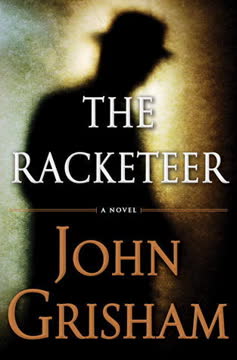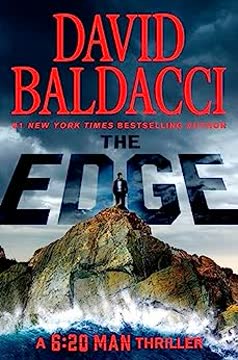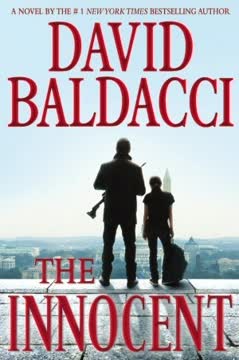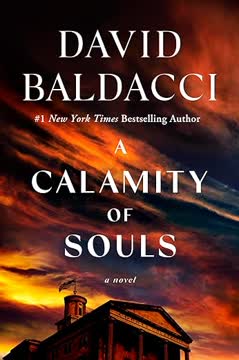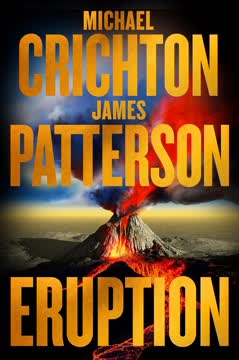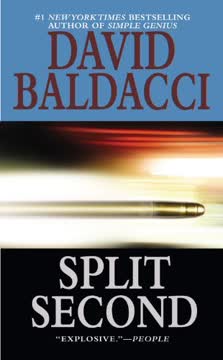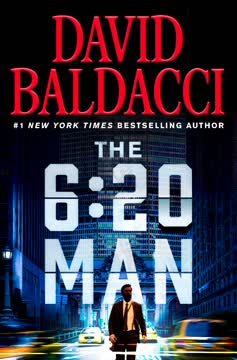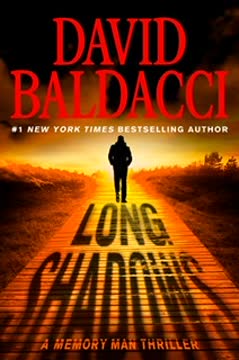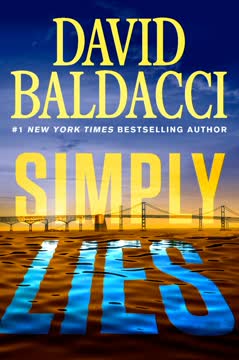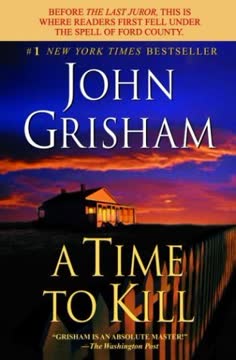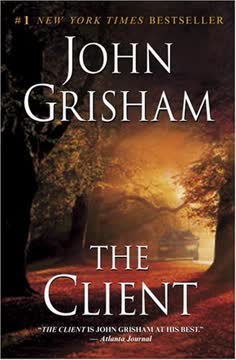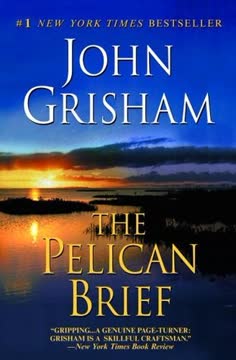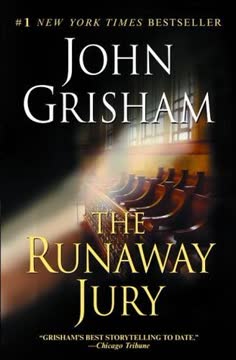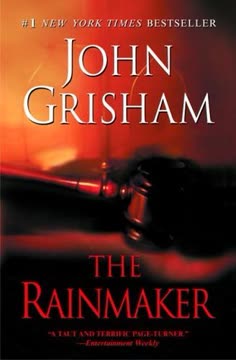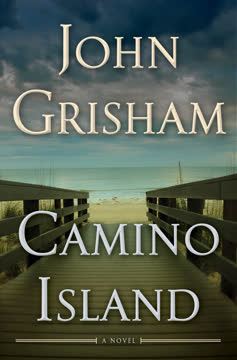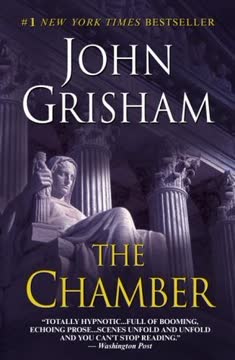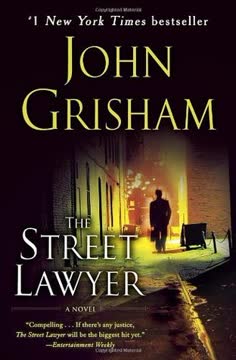Plot Summary
Lawyer Turned Inmate's Grim Reality
Malcolm Bannister, once a successful lawyer, finds himself serving a ten-year sentence for a crime he claims he didn't commit. His life is a shadow of what it once was, having lost his legal license, his family, and his freedom. In prison, Malcolm becomes a jailhouse lawyer, assisting fellow inmates with their legal issues. Despite the bleakness of his situation, he clings to the hope of one day regaining his freedom and reuniting with his son, Bo, who is growing up without him. Malcolm's resilience and intelligence become his tools for survival as he plots a way out of his unjust imprisonment.
A Judge's Murder Sparks Intrigue
The murder of Federal Judge Raymond Fawcett and his secretary, Naomi Clary, in a remote cabin sends shockwaves through the legal community and captures national attention. The FBI is at a loss, with no leads or evidence to solve the case. Malcolm, who has never met the judge, sees an opportunity in the chaos. He possesses information about the murder that could be his ticket to freedom. As the media frenzy grows, Malcolm begins to devise a plan that could change his life forever.
Prison Life and Legal Maneuvers
Within the confines of prison, Malcolm's life is a blend of routine and legal work. He gains a reputation as a skilled jailhouse lawyer, assisting other inmates with their cases. When he learns about Judge Fawcett's murder, he realizes he holds valuable information that could secure his release. Malcolm contacts the FBI, offering to trade his knowledge for a reduced sentence. This sets in motion a daring plan that hinges on his ability to outsmart the system and regain his freedom.
A Deal with the FBI
Malcolm meets with FBI agents, proposing a deal: he will provide the name of Judge Fawcett's killer in exchange for his release and a new identity. The agents, desperate for a breakthrough in the case, are intrigued but cautious. Malcolm insists on witness protection and a fresh start, knowing this is his only chance to escape prison. The FBI agrees to his terms, setting the stage for a high-stakes gamble that could either free Malcolm or leave him trapped in a web of deceit.
The Confession and Its Consequences
The FBI arrests Quinn Rucker, a former inmate and drug dealer, for the murder of Judge Fawcett. Under intense pressure, Quinn confesses, revealing a plot of bribery and betrayal. However, the confession is fraught with allegations of coercion and manipulation by the FBI. As the legal battle unfolds, Malcolm's role as a key witness becomes crucial. The stakes are higher than ever, with Malcolm's freedom and the truth hanging in the balance.
New Identity, New Life
With the FBI's assistance, Malcolm becomes Max Baldwin, a man with a new face and identity. He relocates to Florida, where he begins to rebuild his life, always wary of his past catching up with him. The transition is challenging, but Max is determined to leave his old life behind. He navigates the complexities of his new existence, aware that the trial of Quinn Rucker looms on the horizon, threatening to disrupt his newfound freedom.
The Trial Looms Ahead
As the trial of Quinn Rucker approaches, Max must prepare to testify against his former friend. The FBI and prosecutors rely heavily on his testimony to secure a conviction. Max grapples with the fear of retribution and the pressure of the courtroom. The trial will test his resolve and determine the success of his new life. Despite the uncertainty, Max is ready to face whatever comes next, determined to protect his freedom at all costs.
New Identity, New Challenges
Now living as Max Baldwin, Malcolm adjusts to his new identity after undergoing transformative surgery. He looks nothing like his former self, which is both unsettling and comforting. Despite the changes, he remains cautious, aware that his past could catch up with him. Max is determined to leave his old life behind, but the looming trial of Quinn Rucker keeps him tethered to his past. As he navigates his new existence, Max must balance the thrill of freedom with the constant fear of being discovered.
A Risky Meeting in Charleston
Max meets with FBI agents in Charleston, South Carolina, to discuss the upcoming trial of Quinn Rucker. The agents are eager to see Max's transformation and rely on his testimony to secure a conviction. Max, however, is wary of the FBI's intentions and the potential risks involved. He knows that his safety depends on maintaining his new identity and staying one step ahead of those who might seek retribution. The meeting is tense, with Max carefully navigating the conversation to protect his interests.
The Caribbean Escape Plan
With the trial approaching, Max devises a plan to escape to the Caribbean. He secures a new passport and driver's license, preparing for a journey that will take him far from the reach of the FBI and his past life. Max's meticulous planning involves creating a new identity and establishing a life in the islands, where he hopes to find peace and anonymity. The plan is risky, but Max is determined to leave everything behind and start anew, free from the constraints of his former life.
Gold, Lies, and Deception
As Max settles into his new life, he reflects on the events that led to Judge Fawcett's murder. He uncovers a web of lies and deception, revealing the true motive behind the crime: a stash of hidden gold in the judge's safe. Max realizes that the gold is the key to his freedom and the reason for the murder. He must navigate the dangerous waters of greed and betrayal to secure his future, all while keeping the truth hidden from those who would use it against him.
A New Life in Antigua
After a tense journey, Max finally arrives in Antigua, where he begins to build a new life. The island offers the peace and anonymity he has longed for, allowing him to leave his past behind. Max embraces the slower pace of island life, finding comfort in the beauty of his surroundings and the freedom to be himself. As he settles into his new home, Max reflects on the journey that brought him here and the future that awaits him, free from the burdens of his former life.
Characters
Malcolm Bannister
Malcolm Bannister is a former lawyer turned inmate, wrongfully imprisoned for a crime he didn't commit. Stripped of his career and family, he becomes a jailhouse lawyer, helping fellow inmates while plotting his escape. Intelligent and resourceful, Malcolm is driven by a desire for justice and freedom. His knowledge of Judge Fawcett's murder becomes his ticket out of prison, leading to a new life as Max Baldwin.
Judge Raymond Fawcett
Judge Raymond Fawcett is a federal judge whose murder sets off a nationwide investigation. Known for his harsh sentencing, Fawcett's death reveals a hidden life of corruption and bribery. His murder becomes the key to Malcolm's freedom, as the truth about Fawcett's dealings comes to light.
Quinn Rucker
Quinn Rucker is a former inmate and drug dealer, accused of murdering Judge Fawcett. His relationship with Max is complicated, as they share a history that becomes pivotal in the trial. Quinn's confession is central to the case, though it is marred by allegations of coercion. As the trial approaches, Quinn's fate hangs in the balance, with Max's testimony playing a crucial role in determining the outcome.
Dionne Bannister
Dionne Bannister is Malcolm's ex-wife, who divorces him after his imprisonment. She remarries and raises their son, Bo, with another man. Her departure is a source of pain for Malcolm, who struggles with the loss of his family and the years he has missed with his son.
Bo Bannister
Bo is Malcolm's son, who was six years old when his father went to prison. As Malcolm serves his sentence, Bo grows up with a new father figure, leaving Malcolm to wonder if he will ever reconnect with his son.
Victor Westlake
Victor Westlake is the head of the FBI task force investigating Judge Fawcett's murder. He is determined to solve the case and bring the killer to justice, navigating the complexities of the investigation and the deal with Max. Westlake's leadership is crucial in the pursuit of Quinn Rucker, as he works tirelessly to uncover the truth and secure a conviction.
Pat Surhoff
Pat Surhoff is a U.S. Marshal who helps Malcolm transition into his new life as Max Baldwin. Supportive and professional, Pat ensures Malcolm's safety and guides him through the complexities of witness protection.
Diana Tyler
Diana Tyler is Max's handler in the Witness Security Program, providing guidance and support as he adjusts to his new identity. Her role is to ensure Max's safety and help him navigate the challenges of starting over. Diana's professionalism and dedication are vital to Max's transition, as she helps him maintain his cover and avoid detection.
Plot Devices
Rule 35 Motion
The Rule 35 motion is a legal mechanism that allows Malcolm to negotiate his release from prison in exchange for solving a crime. It becomes the cornerstone of his plan to escape incarceration and start a new life, highlighting the complexities of the legal system and the lengths one will go to for freedom.
Witness Protection Program
The Witness Protection Program provides Malcolm with a new identity and a chance to start over as Max Baldwin. It offers safety and anonymity, crucial for his survival after testifying against Quinn Rucker. The program's intricacies and challenges are central to Malcolm's transformation and the story's tension.
New Identity
Max Baldwin's new identity is a central plot device, allowing him to escape his past and start anew. The transformation is both physical and psychological, as Max navigates the challenges of his new life while maintaining his cover. The new identity is a symbol of freedom and redemption, representing Max's desire to leave his old life behind and find peace in a new world.
Hidden Gold
The hidden gold in Judge Fawcett's safe is a key plot device, revealing the true motive behind the murder. The gold represents greed and betrayal, driving the events that unfold and shaping the characters' actions. It is both a symbol of wealth and a burden, as Max must navigate the dangerous waters of deception to secure his future and protect the truth from those who would use it against him.
Analysis
"The Racketeer" by John Grisham is a gripping tale of justice, deception, and redemption. Through the character of Malcolm Bannister, Grisham explores themes of corruption within the legal system and the lengths one will go to reclaim their life. The novel delves into the complexities of identity and the pursuit of freedom, as Malcolm transforms into Max Baldwin to escape his past. The hidden gold serves as a symbol of greed and betrayal, driving the narrative and highlighting the moral ambiguities faced by the characters. Ultimately, the story is a testament to resilience and the human spirit's capacity for reinvention, offering readers a thrilling journey through the intricacies of crime and justice.
Last updated:
FAQ
Synopsis & Basic Details
What is The Racketeer about?
- Wrongful Conviction's Aftermath: The Racketeer follows Malcolm Bannister, a disbarred lawyer serving a ten-year federal prison sentence for a crime he insists he didn't commit. Stripped of his family and career, Malcolm becomes a "jailhouse lawyer," using his legal acumen to help fellow inmates.
- Judge's Murder, Opportunity Knocks: The brutal murder of Federal Judge Raymond Fawcett and his secretary in a remote cabin ignites a national FBI investigation with no leads. Malcolm, possessing a secret connection to the killer, sees this as his sole opportunity for freedom.
- High-Stakes Deal for Freedom: Malcolm leverages his hidden knowledge, negotiating a perilous deal with the FBI: he'll reveal the killer's identity in exchange for his immediate release, a new identity under the Witness Protection Program, and the reward money. This sets in motion a complex plan of deception, manipulation, and a quest for a hidden fortune.
Why should I read The Racketeer?
- Masterful Plot Twists: John Grisham delivers a labyrinthine plot filled with unexpected turns and clever deceptions, keeping readers guessing about Malcolm's true intentions and the real killer's identity until the very end. The intricate planning and execution of Malcolm's scheme are a testament to Grisham's storytelling prowess.
- Deep Dive into Justice System Flaws: The novel offers a scathing critique of the federal justice system, from the arbitrary nature of sentencing and prison conditions to the FBI's investigative blunders and the ethical compromises of prosecutors. It explores themes of wrongful conviction and the desperate measures individuals take to survive.
- Compelling Anti-Hero's Journey: Malcolm Bannister is a complex protagonist—a man wronged by the system who then manipulates it for his own ends. His journey from victim to orchestrator of a grand scheme, driven by a desire for freedom and revenge, provides a morally ambiguous yet deeply engaging narrative.
What is the background of The Racketeer?
- Post-9/11 Federal Overreach: The story is set against a backdrop of an expanded federal criminal code and aggressive prosecution tactics, particularly evident in Malcolm's RICO conviction. Grisham highlights the proliferation of federal crimes, noting, "Today there are over forty-five hundred federal crimes, and the number continues to grow."
- Appalachian Meth Culture: The narrative delves into the socio-economic realities of rural Appalachia, particularly the meth trade and its devastating impact on families like Nathan Cooley's. This provides a gritty, authentic context for the killer's background and motivations, contrasting sharply with the white-collar world of federal judges.
- Judicial Corruption & Environmental Stakes: A significant underlying plot point involves the uranium mining litigation (Armanna Mines v. Commonwealth of Virginia) that Judge Fawcett presided over. This case, with its multi-billion dollar stakes and environmental implications, provides the motive for Fawcett's corruption and the hidden gold, connecting judicial integrity to vast corporate interests.
What are the most memorable quotes in The Racketeer?
- "I am a lawyer, and I am in prison. It's a long story." (Chapter 1): This opening line immediately establishes Malcolm Bannister's predicament and narrative voice, setting a tone of intrigue and personal injustice that defines his character and the entire The Racketeer plot. It encapsulates his disbarment and incarceration, hinting at the complex journey ahead.
- "The truth is that nothing is clear. There are too many random thoughts, too much fear, anger, and raw emotion to understand what is happening." (Chapter 10): Malcolm's reflection on his sentencing captures the overwhelming psychological impact of imprisonment and the loss of control. This quote delves into the emotional turmoil of a man whose life has been irrevocably altered by the justice system, a key Malcolm Bannister motivation insight.
- "You're just getting revenge, aren't you, Max? One last shot at the government." (Chapter 43): Victor Westlake's direct question to Max Baldwin near the end of the novel perfectly encapsulates the underlying theme of Malcolm's entire elaborate scheme. Max's ambiguous reply, "Who says it's my last?", leaves the reader contemplating the enduring nature of his vendetta and the true meaning of justice in The Racketeer ending explained.
What writing style, narrative choices, and literary techniques does John Grisham use?
- First-Person, Confessional Narrative: Grisham employs a first-person point of view through Malcolm Bannister, allowing intimate access to his thoughts, plans, and deep-seated resentment. This narrative choice builds immediate empathy and trust with the reader, even as Malcolm's actions become increasingly morally ambiguous, enhancing the Malcolm Bannister character analysis.
- Lean, Propulsive Prose: The writing style is direct, unadorned, and highly efficient, driving the plot forward with a relentless pace. Grisham avoids elaborate descriptions, focusing instead on dialogue and action, which is characteristic of his legal thrillers and keeps the The Racketeer plot constantly moving.
- Subtle Foreshadowing and Misdirection: Grisham masterfully plants subtle clues and uses narrative misdirection to keep the reader off balance. Malcolm's detailed observations of prison life, his legal knowledge, and seemingly throwaway lines often gain significant meaning later, contributing to the intricate The Racketeer analysis and its many twists.
Hidden Details & Subtle Connections
What are some minor details that add significant meaning?
- The Slamming Metal Door Motif: Malcolm repeatedly references the "indescribable pinch of thick cuffs" and the "thick metal door... crashed and vibrated" during his arrest (Chapter 5), a sound he will "never forget." This recurring sensory detail symbolizes his loss of freedom and the brutal, dehumanizing entry into the prison system, deeply impacting his Malcolm Bannister motivations.
- Fawcett's Cigar Boxes and Vandy's Smokes: The specific detail of Judge Fawcett's preference for "Lavos" cigars, purchased from "Vandy's Smokes" in Roanoke (Chapter 41), becomes a crucial, traceable link. These empty wooden boxes, later found in his safe, are not just containers but direct evidence of his habits and the hidden gold, a key element in the The Racketeer symbolism.
- Nathan Cooley's "Nattie" Nickname: Malcolm's internal reference to Nathan Cooley as "Nattie" (Chapter 28) is a subtle callback to their shared prison time, confirming their prior acquaintance long before Malcolm explicitly reveals it. This detail reinforces Malcolm's manipulative foresight and the depth of his planning, central to the The Racketeer plot analysis.
What are some subtle foreshadowing and callbacks?
- Fawcett's Judicial Shift: Malcolm's research reveals Judge Fawcett's abrupt shift in judicial philosophy around 2000, becoming "erratic and far less compassionate" (Chapter 4). This subtle detail foreshadows his later corruption, suggesting a moral decline that made him susceptible to bribery, a key themes in The Racketeer element.
- Malcolm's "Escape" Fantasy: Early in his imprisonment, Malcolm fights the urge to "just keep walking, to step over the line" at Frostburg (Chapter 1). This foreshadows his eventual, meticulously planned "escape" from the system, not by physically walking away, but by manipulating it from within, highlighting his Malcolm Bannister motivations.
- The "Black-Market" Gold Discount: The gold trader Hassan's immediate assumption that Malcolm's gold is "black-market variety" and his offer of a "20 percent discount" (Chapter 39) subtly confirms the illicit origin of the gold. This callback to Fawcett's corrupt dealings reinforces that the treasure is tainted, not just a neutral asset, adding depth to the hidden gold symbolism.
What are some unexpected character connections?
- Malcolm's Marine Corps Brotherhood: The shared Marine Corps background between Malcolm and FBI Director Victor Westlake (Chapter 8) is an unexpected connection that Malcolm subtly leverages. He uses it as a point of commonality in his letter, hinting at a shared code of honor that he hopes will make Westlake more receptive to his unconventional proposal, influencing Victor Westlake motivations.
- Vanessa Young's Brother in Prison: Vanessa's initial presence at Frostburg, visiting her brother (Chapter 28), creates an unexpected link to the prison world that Malcolm inhabits. This shared experience of having loved ones incarcerated forms a foundation for her later involvement in Malcolm's elaborate scheme, deepening her supporting character analysis.
- Nathan Cooley's "Nattie" Identity: The revelation that Nathan Cooley, the true killer, was known as "Nattie" in prison and was a former client of Malcolm's (Chapter 42) is a crucial, unexpected connection. This hidden history is the linchpin of Malcolm's entire plan, demonstrating his long-term strategic thinking and the depth of his manipulation, a core The Racketeer plot twist.
Who are the most significant supporting characters?
- Vanessa Young: The Indispensable Partner: Vanessa evolves from a distant love interest to Malcolm's crucial, resourceful, and loyal partner in crime. Her intelligence, courage (e.g., the "naked distraction" in Chapter 36), and unwavering commitment are essential to the plan's success, making her vital for The Racketeer character analysis.
- Nathan Cooley: The Unwitting Pawn: Nathan Cooley is the true killer of Judge Fawcett, a desperate and easily manipulated former inmate. His gullibility and desire for revenge make him the perfect target for Malcolm's scheme, serving as the catalyst for Malcolm's freedom and the retrieval of the gold, driving the Nathan Cooley motivations.
- Dee Ray Rucker: The Pragmatic Enabler: Quinn's younger brother, Dee Ray, initially appears as a concerned family member but quickly becomes a pragmatic, financially savvy enabler of Malcolm's plan. His willingness to provide resources and logistical support (e.g., the yacht, the fake alibi for Quinn) is critical to the gold's extraction and distribution, highlighting his role in the Rucker family dynamics.
Psychological, Emotional, & Relational Analysis
What are some unspoken motivations of the characters?
- Malcolm's Deep-Seated Revenge: Beyond just freedom, Malcolm's unspoken motivation is a profound desire for revenge against the federal government that "nailed my ass for ten years with no evidence" (Chapter 2). His elaborate scheme is not just about getting out, but about outsmarting and humiliating the system that wronged him, a core Malcolm Bannister motivation.
- Fawcett's Midlife Crisis & Greed: Judge Fawcett's shift from a "protector of individual rights" to a "hard-ass" (Chapter 4) is driven by unspoken midlife disillusionment and financial pressure after his appeals nomination failed and his father-in-law died. His corruption stems from a desire for wealth and status he felt denied, a key Judge Raymond Fawcett character analysis.
- Quinn Rucker's Desperation for Escape: Quinn's willingness to confess to a crime he didn't commit, and later to participate in Malcolm's scheme, is fueled by a desperate need to escape the harsh realities of prison. His "dark days" and "bipolar" nature (Chapter 16) reveal a vulnerability that Malcolm expertly exploits, highlighting Quinn Rucker's psychological complexities.
What psychological complexities do the characters exhibit?
- Malcolm's Calculated Paranoia: Malcolm develops a profound, yet calculated, paranoia post-release, meticulously planning his movements and assuming constant surveillance (Chapter 23). This isn't just fear; it's a survival mechanism honed in prison, reflecting a deep-seated distrust of authority and a need for absolute control over his new identity, a key aspect of Max Baldwin's psychological state.
- Fawcett's Hypocrisy and Hubris: Judge Fawcett embodies a complex mix of public integrity and private corruption. His meticulous hidden safe and secret gold dealings (Chapter 3) reveal a man whose hubris led him to believe he could operate above the law, ultimately leading to his demise. This duality is central to the themes in The Racketeer regarding power and morality.
- Quinn's Volatile Instability: Quinn Rucker exhibits significant psychological instability, described as "severely bipolar" and prone to "dark days" (Chapter 19). His erratic behavior—confessing, recanting, threatening, then apologizing—makes him a volatile and unpredictable character, yet Malcolm manages to harness this instability for his own ends, showcasing Quinn Rucker's motivations.
What are the major emotional turning points?
- Malcolm's Divorce and Son's Estrangement: The arrival of divorce papers and the realization that his son, Bo, is growing up with a new father (Chapter 1) is a devastating emotional turning point for Malcolm. This profound loss fuels his determination to regain freedom, not just for himself, but for a chance, however slim, to reconnect with his son, driving Malcolm Bannister's emotional arc.
- Quinn's Confession Under Duress: Quinn Rucker's coerced confession, detailed in Chapter 15, is a critical emotional turning point, not just for him but for the FBI's investigation. His breakdown under relentless interrogation, particularly the threat to his family, highlights the psychological toll of the justice system and the desperation it can induce, a key Quinn Rucker character development.
- Vanessa's Commitment to the Plan: Vanessa's decision to actively participate in Malcolm's dangerous scheme, including the retrieval of the gold and the "naked distraction" (Chapter 36), marks a significant emotional turning point. Her unwavering loyalty and willingness to take extreme risks underscore the depth of her connection to Malcolm and her belief in his cause, showcasing Vanessa Young's motivations.
How do relationship dynamics evolve?
- Malcolm and His Father: Strained Respect: The relationship between Malcolm and his father, Henry, is characterized by strained respect and unspoken disappointment. Henry's belief in Malcolm's guilt and his humiliation (Chapter 2) creates a chasm, yet his monthly visits demonstrate a persistent, if rigid, paternal love. Malcolm's final letter to his father, fabricating a prison transfer (Chapter 23), signifies a painful, necessary severing of ties for his new life.
- Malcolm and Quinn: Calculated Friendship to Partnership: Their relationship evolves from a jailhouse friendship, where Malcolm offers legal advice, to a calculated partnership in a grand deception. Malcolm exploits Quinn's desperation and desire for revenge, but also shows a form of loyalty by ultimately securing his release. Their final reunion (Chapter 42) is one of genuine camaraderie, forged through shared risk and success, a complex The Racketeer relationship analysis.
- Malcolm and Vanessa: Infatuation to Indispensable Alliance: Malcolm's initial infatuation with Vanessa in prison (Chapter 28) blossoms into a deep, trusting alliance. She becomes his confidante, his emotional anchor, and a crucial operational partner, demonstrating remarkable courage and resourcefulness. Their relationship is built on shared risk and mutual respect, evolving into a powerful bond that transcends their dangerous circumstances, a central The Racketeer emotional analysis.
Interpretation & Debate
Which parts of the story remain ambiguous or open-ended?
- The True Source of the "Breach": The exact mechanism by which the Rucker family discovered Max Baldwin's new identity and location remains ambiguous (Chapter 25). While the FBI speculates about private firms and ex-agents, a definitive internal leak is never fully disproven, leaving open questions about the integrity of the Witness Protection Program and the government's assurances.
- The Fate of the Uranium Mining Case: The novel concludes with the Supreme Court poised to hear the Armanna Mines case, with Malcolm hinting at exposing the corruption that influenced Judge Fawcett's original ruling (Chapter 43). The ultimate outcome of this multi-billion dollar environmental and legal battle, and whether justice is truly served, is left unresolved.
- Malcolm's Long-Term Intentions: Max Baldwin's final statement, "Who says it's my last?" (Chapter 43), regarding his revenge against the government, leaves his long-term intentions open-ended. It's debatable whether he will truly settle into a peaceful life in Antigua or continue to subtly undermine the system that wronged him, adding complexity to The Racketeer ending explained.
What are some debatable, controversial scenes or moments in The Racketeer?
- The Morality of Framing Quinn Rucker: Malcolm's deliberate act of framing Quinn Rucker for Judge Fawcett's murder, knowing Quinn is innocent, is highly controversial. While Malcolm eventually secures Quinn's release, the ethical implications of using an innocent man as a pawn in his elaborate scheme raise significant questions about his character and the nature of justice in The Racketeer analysis.
- Vanessa's "Naked Distraction": Vanessa's decision to confront Nathan Cooley's friends naked (save for bikini bottoms and latex gloves) to deter them from entering the house (Chapter 36) is a debatable scene. While effective, it raises questions about the objectification of women and the extreme measures taken in the pursuit of the gold, sparking discussion on The Racketeer controversial moments.
- The Gold's Rightful Ownership: The question of who rightfully owns the millions in gold bullion, stolen from a corrupt judge who likely received it as a bribe, is a central debate. Malcolm's justification that it "belongs to no one" (Chapter 42) allows him to rationalize his theft, but readers may question the morality of his actions, exploring themes in The Racketeer like illicit wealth.
The Racketeer Ending Explained: How It Ends & What It Means
- Malcolm's Ultimate Freedom and Wealth: The novel concludes with Malcolm (as Max Baldwin) and Vanessa successfully extracting the gold from the U.S. and establishing a new life in Antigua. They have secured their freedom, a new identity, and a vast fortune, effectively outsmarting the federal government and escaping their pasts. This is a triumphant, albeit morally ambiguous, resolution for the protagonist.
- Justice for Fawcett's Murderer: Nathan Cooley, the true killer of Judge Fawcett, is apprehended in Jamaica, framed with drugs and a gun, and faces a lengthy prison sentence. Malcolm's plan ensures that the actual murderer is incarcerated, albeit through a manipulated process, providing a form of justice for Fawcett and his secretary, a key aspect of The Racketeer ending explained.
- Lingering Questions of Systemic Corruption: While Malcolm achieves personal victory, the ending leaves a bitter taste regarding the broader justice system. The FBI's initial incompetence, its willingness to be manipulated, and the unresolved corruption surrounding the Armanna Mines case (Chapter 43) suggest that systemic flaws persist, and Malcolm's "revenge" is a personal triumph rather than a systemic reform, prompting further The Racketeer analysis.
Review Summary
The Racketeer received mixed reviews, with an average rating of 3.89/5. Many praised Grisham's storytelling and plot twists, finding it engaging and entertaining. Some readers appreciated the protagonist's clever schemes and the exploration of legal themes. However, others criticized the lack of character development, unrealistic plot elements, and perceived decline in Grisham's writing quality. Some found the main character unlikable and the story predictable. Despite criticisms, many long-time Grisham fans enjoyed the book as a thrilling legal drama.
Similar Books
Download PDF
Download EPUB
.epub digital book format is ideal for reading ebooks on phones, tablets, and e-readers.
